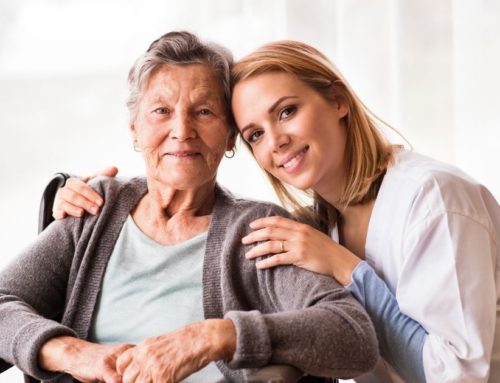Though the risk of suffering a stroke increases with age, there are proactive measures that seniors can take to reduce their risk. Before we look at five of them, let’s first review how to recognize that someone is having a stroke.
The Signs of a Stroke
A stroke occurs when a blood vessel that carries nutrients and oxygen to the brain is blocked by a clot, or it bursts, depriving the brain of oxygen and nutrients. The Center for Disease Control and Prevention tells us that there are numerous signs and symptoms that someone may be suffering a stroke.
One effective way to remember them is by using the acronym FAST:
F – face drooping
A – arm weakness
S – speech difficulty or confusion
T- time to call 9-1-1
Call 9-1-1 immediately if you or anyone you know exhibits any of these symptoms. Rapid medical intervention is critical to improving treatment options and outcomes. Even if the symptoms are no longer present after a few minutes, they could indicate the occurrence of a “mini-stroke,” which is also a serious medical condition requiring medical care.
Reducing the Risk of Stroke
Though the risk of suffering a stroke is higher among seniors, stroke is not an inevitable event that comes with aging. Here are five things seniors can do to reduce the risk of stroke:
1. Lower Blood Pressure
Hypertension, or high blood pressure, is one of the primary causes of stroke. However, it can be managed effectively through medication, diet, and regular monitoring. It’s important that seniors know their blood pressure numbers and keep them low. Other medical conditions known to be risk factors for stroke include high cholesterol, diabetes, atrial fibrillation, and narrowing of the arteries (carotid stenosis).
2. Lose Weight and Be Active
Not getting enough physical activity and being overweight increases the risk for many health conditions, including stroke. Losing just a small amount of weight, 5-10 pounds, can reduce stroke risk and increase general health and well-being. The American Heart Association recommends at least 150 minutes of activity each week for adults. Walking and swimming are a couple of great ways for seniors to achieve that.
3. Have a Balanced and Nutritious Diet
Diets that are high in saturated and trans fats, cholesterol, and salt can raise cholesterol levels and blood pressure, while diets high in calories can lead to obesity, all factors increasing the risk of stroke. A well-balanced diet containing five or more servings of fruits and vegetables each day can reduce the risk. Leafy vegetables, apples, citrus fruits, and pears can be particularly beneficial.
4. Reduce or Eliminate Drinking
Drinking alcohol increases blood pressure, can interfere with anti-stroke medications and impairs liver functioning that regulates blood clotting, all of which can increase the chances of suffering a stroke. If your senior must drink, have them do it in moderation if they can’t quit altogether.
5. Quit Smoking
Quitting smoking is one of the best ways to reduce the risk of stroke for a senior. The carbon monoxide and nicotine in cigarette smoke damages the heart and circulatory system, as well as the lungs, increasing the chance of stroke.
These five tips can significantly reduce the risk of stroke for aging-in-place seniors. Always consult a doctor before making changes to diet or activity levels.
Let us help!
Helping seniors reduce their risk of stroke can be difficult. We can help you and your loved one. Help At Home has been serving Chevy Chase, Maryland for over 20 years. Learn more about us at www.helpathomecare.com or call us at (301) 654-6789. We’ll be happy to visit with you about your needs and let you know how our friendly, professional caregivers can help you and your loved one.





